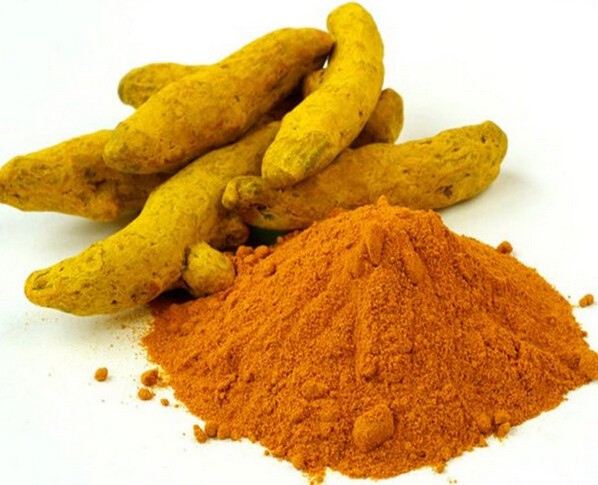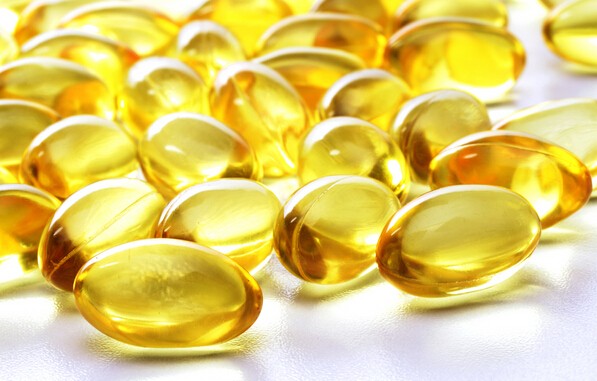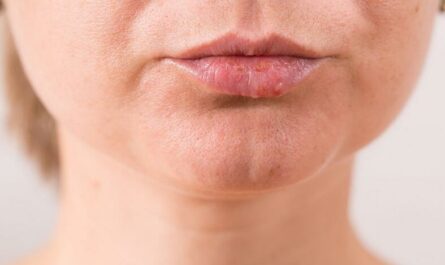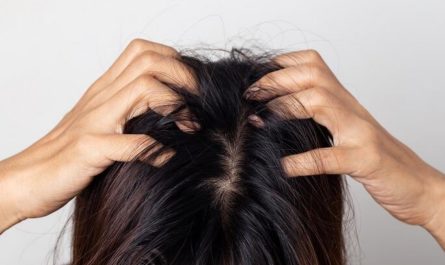Gingivitis is a common form of periodontal disease (gum disease). This condition causes inflammation, redness, and irritation of the gingiva or part of the gum near the base of your teeth. In some cases, Gingivitis can lead to more serious gum disease and tooth loss. Fortunately, there are some remedies can help get rid of gingivitis effectively. This article will discuss the 14 best natural remedies to get rid of gingivitis fast.

What is Gingivitis
Gingivitis is the inflammation of the gums caused by plaque and bacteria buildup along the gumline. It is often characterized by symptoms like redness, swelling, tenderness, and bleeding gums. If left untreated, gingivitis can progress to periodontitis, a more severe form of gum disease.
Symptoms of Gingivitis
Recognizing the early signs of gingivitis is crucial for prompt treatment. Common symptoms include:
- Red, swollen, or tender gums.
- Bleeding gums, especially during brushing or flossing.
- Bad breath or a persistent bad taste in the mouth.
- Receding gums or teeth appearing longer than usual.
- Formation of pockets between the teeth and gums.
- Changes in the bite or the way dentures fit.
14 Best Home Remedies to Get Rid of Gingivitis
Follow these simple treatments to get rid of and prevent gingivitis.
1. Maintaining Proper Oral Hygiene
One of the most effective ways to prevent and treat gingivitis is by brushing your teeth regularly. Try to brush at least twice daily using a soft-bristled toothbrush and fluoride toothpaste. Make sure to brush all surfaces of your teeth and pay special attention to the gum line.
Flossing daily
In addition to brushing, flossing plays a crucial role in maintaining good oral hygiene. Flossing helps remove plaque and food particles between the teeth and along the gum line, where a toothbrush may not reach. It is important to floss at least once a day using a gentle back-and-forth motion.
Using an antimicrobial mouthwash
Rinsing with an antimicrobial mouthwash can further enhance your oral hygiene routine. An antimicrobial mouthwash helps kill bacteria and reduce plaque formation. Look for a mouthwash that contains active ingredients such as chlorhexidine or essential oils like tea tree oil.
2. Saltwater Rinse
A saltwater rinse can help reduce inflammation and neutralize the pH level in the mouth, creating an unfavorable environment for bacteria. It also has a soothing effect on the gums and can promote healing.
How to make a saltwater rinse
To make a saltwater rinse, dissolve half a teaspoon of salt in a glass of warm water. Swish the solution in your mouth for about 30 seconds and spit it out. Repeat this process two to three times a day, especially after meals.
3. Oil Pulling
Oil pulling is an ancient Ayurvedic practice that involves swishing oil in the mouth to improve oral health. Traditionally, sesame oil was used, but coconut oil is commonly used today due to its pleasant taste.
How does oil pulling help with gingivitis?
Oil pulling helps remove bacteria and toxins from the mouth, reducing the risk of gum infections like gingivitis. It can also help alleviate bad breath and promote overall oral hygiene.
How to do oil pulling
Take one tablespoon of coconut oil and swish it in your mouth for 15-20 minutes. Spit out the oil into a trash can (do not swallow) and rinse your mouth with warm water. Repeat this process daily in the morning before brushing your teeth.

3. Tea Tree Oil
Tea tree oil is derived from the leaves of the Melaleuca alternifolia tree. It has natural antibacterial and anti-inflammatory properties, benefiting oral health.
How does tea tree oil help with gingivitis?
Tea tree oil can help kill bacteria and reduce inflammation in the gums. It also promotes healing and can alleviate symptoms such as bleeding and swelling.
How to use tea tree oil for gingivitis
Dilute a few drops of tea tree oil in a carrier such as coconut oil. Use a cotton swab to apply the mixture to the affected gums. Leave it on for a few minutes, then rinse your mouth with water. Repeat this process once or twice daily.
4. Aloe Vera Gel
Aloe vera gel is a natural gel-like substance extracted from the aloe vera plant leaves. It has antimicrobial and anti-inflammatory properties that can benefit oral health.
How does aloe vera gel help with gingivitis?
Aloe vera gel can help reduce inflammation, soothe the gums, and promote healing. It also has antibacterial properties that can help fight off the bacteria causing gingivitis.
How to apply aloe vera gel to the gums
Extract the gel from an aloe vera leaf and apply it directly to the affected gums. Leave it on for a few minutes, then rinse your mouth with water. Repeat this process several times a day for best results.

5. Turmeric Paste
Turmeric is a bright yellow spice commonly used in Indian cuisine. It contains an active compound called curcumin, which has potent anti-inflammatory and antimicrobial properties.
How does turmeric help with gingivitis?
Turmeric can help reduce inflammation, fight off bacteria, and promote gum health. Its anti-inflammatory properties can help alleviate symptoms such as swelling and tenderness.
How to make a turmeric paste
Mix one teaspoon of turmeric powder with a small amount of water to create a paste. Apply the paste to the affected gums and leave it on for 10-15 minutes. Rinse your mouth thoroughly with water. Repeat this process once or twice daily.
6. Baking Soda
Baking soda, also known as sodium bicarbonate, is a white powder with alkaline properties. It is commonly used in baking and has various household uses, including oral care.
How does baking soda help with gingivitis?
Baking soda can help neutralize the acidic environment in the mouth, making it less favorable for bacteria to thrive. It also has mild abrasive properties that can help remove plaque and stains from the teeth.
How to use baking soda for gingivitis
Brush your teeth and gums gently for about two minutes, then rinse your mouth thoroughly with water. Repeat this process two to three times a week.
7. Hydrogen Peroxide
Hydrogen peroxide is a chemical compound with strong oxidizing properties. It is commonly used as an antiseptic and oral rinse.
How does hydrogen peroxide help with gingivitis?
Hydrogen peroxide can help kill bacteria and reduce the symptoms of gingivitis. It also has a whitening effect on the teeth.
How to use hydrogen peroxide for gingivitis
Mix equal parts of hydrogen peroxide and water to create a diluted solution. Swish the solution in your mouth for about 30 seconds, then spit it out. Rinse your mouth with water afterward. Use this rinse once daily, but avoid swallowing the solution.

8. Vitamin C
Vitamin C, also known as ascorbic acid, is an essential nutrient crucial in immune function and tissue repair. It is found in various fruits and vegetables, particularly citrus fruits.
How does vitamin C help with gingivitis?
Vitamin C helps support the immune system and promotes gum health. It can help reduce inflammation, strengthen blood vessels, and enhance collagen production, which is important for healthy gums.
How to increase your vitamin C intake
Incorporate vitamin C-rich foods such as oranges, strawberries, kiwis, bell peppers, and broccoli into your diet. You can also take vitamin C supplements after consulting with your healthcare provider.
9. Green Tea
Green tea contains catechins, natural antioxidants with anti-inflammatory and antibacterial properties. Drinking green tea can help reduce inflammation in the gums and inhibit the growth of bacteria that can lead to gingivitis.
How to use green tea for gingivitis
Brew a cup of green tea and let it cool to room temperature. Use it as a mouthwash and swish it around in your mouth for 30 seconds to a minute. Repeat this two to three times a day.
10. Cranberry Juice
Cranberry juice contains compounds that can help prevent bacteria from adhering to the teeth and gums. This can reduce the formation of plaque and help alleviate gingivitis symptoms.
How to use cranberry juice for gingivitis
Drink a glass of unsweetened cranberry juice daily to reap its benefits for oral health. Be sure to choose pure cranberry juice without added sugars.
11. Clove Oil
Clove oil is derived from the dried flower buds of the clove tree. It has been used for centuries for its analgesic, antiseptic, and anti-inflammatory properties.
How does clove oil help with gingivitis?
Clove oil can help reduce pain and inflammation in the gums caused by gingivitis. Its natural antiseptic properties can also help fight off bacteria.
How to use clove oil for gingivitis
Dilute a few drops of clove oil in a carrier oil, such as coconut oil. Apply the mixture to the affected gums using a cotton swab. Leave it on for a few minutes, then rinse your mouth thoroughly with water. Use this remedy sparingly, as clove oil can be strong.
13. Eucalyptus Oil
Eucalyptus oil is extracted from the leaves of the eucalyptus tree. It has antimicrobial properties and a refreshing scent.
How does eucalyptus oil help with gingivitis?
Eucalyptus oil can help kill bacteria in the mouth and reduce inflammation in the gums. Its cooling effect can also provide relief from discomfort caused by gingivitis.
How to use eucalyptus oil for gingivitis
Dilute a few drops of eucalyptus oil in a carrier oil, such as olive oil. Apply the mixture to the gums using a cotton swab. Rinse your mouth with water after a few minutes. Use this remedy in moderation as eucalyptus oil can be potent.
14. Guava Leaves
Guava leaves have natural anti-inflammatory and antimicrobial properties that can help reduce gum inflammation and fight off bacteria causing gingivitis.
How to use guava leaves for gingivitis
Wash a few guava leaves and chew them thoroughly, ensuring the juice comes into contact with the affected gums. Alternatively, you can boil the leaves in water, let them cool, and use the solution as a mouthwash.
How to prevent Gingivitis in the future?
To prevent gingivitis, it’s important to maintain good oral hygiene practices and make certain lifestyle choices. Here are some steps you can take to prevent gingivitis:
- Brush your teeth twice daily: Use a soft-bristled toothbrush and fluoride toothpaste to brush your teeth thoroughly for two minutes each time. Be sure to clean all tooth surfaces, including along the gumline.
- Floss daily: Use dental floss or interdental cleaners to clean between your teeth and along the gumline. This helps remove plaque and food particles that your toothbrush may not reach.
- Use an antimicrobial mouthwash: Rinse your mouth with an antimicrobial mouthwash after brushing and flossing. This can help reduce bacteria and plaque.
- Maintain a healthy diet: Eat a balanced diet with plenty of fruits and vegetables. Limit your sugary and starchy foods intake, as they can contribute to plaque formation.
- Avoid tobacco products: Smoking and using tobacco products can increase your risk of gum disease, including gingivitis. Quitting or avoiding tobacco can help protect your gums and overall oral health.
- Limit alcohol consumption: Excessive alcohol consumption can irritate the gums and contribute to gum disease. Drink alcohol in moderation or avoid it altogether.
- Manage stress: High-stress levels can weaken your immune system and make you more susceptible to infections, including gum disease. Practice stress management techniques such as exercise, meditation, or engaging in hobbies you enjoy.
- Visit your dentist regularly: Schedule regular dental check-ups and professional cleanings. Your dentist can detect early signs of gum disease and provide appropriate treatment and guidance.
- Consider dental sealants or prophylaxis: In some cases, your dentist may recommend dental sealants or prophylaxis, preventive treatments that can help protect your teeth and gums from decay and infection.
When to See A Dentist?
Gingivitis is the early stage of gum disease and can be treated and reversed if caught early. Here are some signs that indicate it’s time to see a dentist about gingivitis:
- Swollen or inflamed gums: If your gums appear red, swollen, or tender, it could be a sign of gingivitis. Healthy gums should be pink and firm.
- Bleeding gums: If your gums bleed while brushing, flossing, or eating, it may indicate gingivitis.
- Bad breath: Persistent bad breath or a constant bad taste in your mouth can indicate gum disease, including gingivitis.
- Receding gums: If your gums are pulling away from your teeth, exposing more of the tooth structure, it could be a sign of gingivitis or gum recession.
- Loose teeth: Gingivitis can cause the gums to pull away from the teeth, leading to the loosening of teeth. If you notice any changes in the position or stability of your teeth, it’s important to seek dental care.
- Pus between gums and teeth: The presence of pus or discharge between your gums and teeth is a sign of infection and requires immediate dental attention.
- Changes in bite or tooth alignment: If your bite feels different or your teeth are shifting or moving, it may be due to gum disease, including gingivitis.
FAQs
1. How long does it take to get rid of gingivitis?
The time it takes to get rid of gingivitis can vary depending on the severity of the condition and the effectiveness of the treatment. With consistent and proper oral hygiene practices along with home remedies, it is possible to see improvement within a few weeks.
2. Can gingivitis lead to tooth loss?
If left untreated, gingivitis can progress to a more severe form of gum disease called periodontitis, resulting in tooth loss. It is crucial to address gingivitis promptly to prevent complications.
3. Can poor nutrition contribute to gingivitis?
Yes, poor nutrition, particularly a diet high in sugar and lacking essential nutrients, can contribute to gum disease, including gingivitis. A balanced diet rich in vitamins and minerals supports overall oral health.
4. Is it normal for gums to bleed during brushing?
Gums that bleed during brushing or flossing can be a sign of gingivitis. However, it is not normal and should be addressed promptly. Consult a dental professional to determine the underlying cause and receive appropriate treatment.






